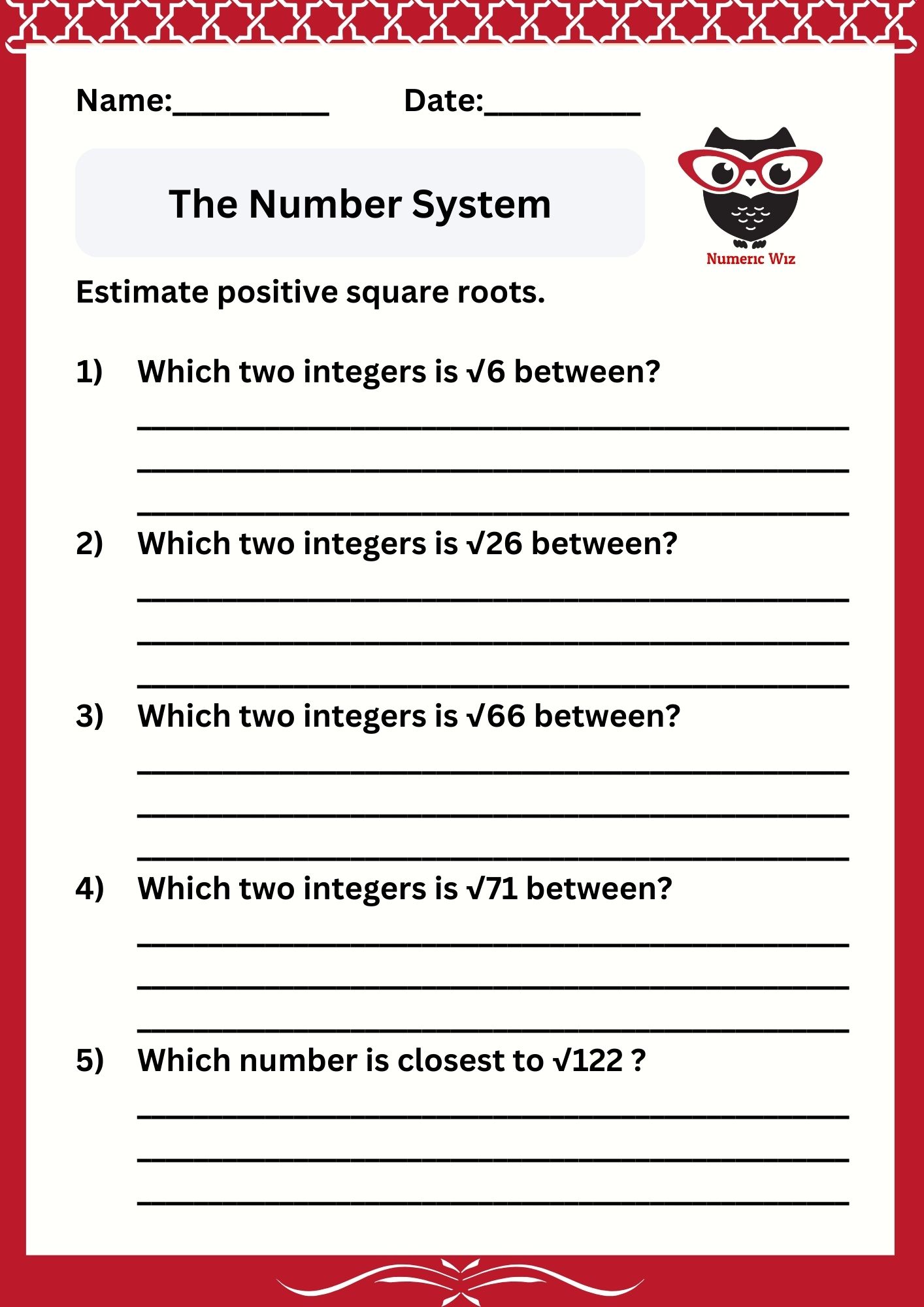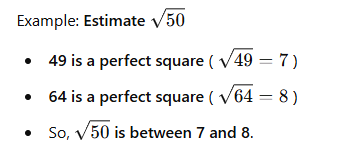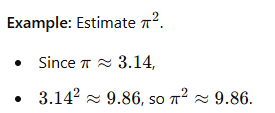
Sometimes, we need to find the square root of a number that isn't a perfect square. Since these square roots are irrational, they don’t give exact whole numbers. Instead, we can estimate their values using rational approximations. Let’s explore how to estimate positive square roots and compare their sizes!
 Understanding Square Roots
Understanding Square RootsA square root of a number x is a value that, when multiplied by itself, gives x.

When a number is not a perfect square, its square root is irrational and falls between two whole numbers.
Step 1: Identify the Perfect Squares Around It
Find two perfect squares that the number is between.

Step 2: Narrow Down the Approximation
Check the squares of decimals between 7 and 8 to get a more accurate estimate.
7.1² = 50.41 (a little too high)
7.0² = 49 (a little too low)
![]()

Using rational approximations, we can compare irrational square roots.

Place perfect squares (like 4 and 9) first.
Estimate where the square root falls between them.
![]()
 Estimating Expressions with Square Roots
Estimating Expressions with Square Roots
 Why its matter?
Why its matter?Mastering square root estimation helps in geometry, algebra, and real-world applications like measurements and physics.
Let’s explore and practice by using designed worksheets at NumericWiz!
For a limited time
